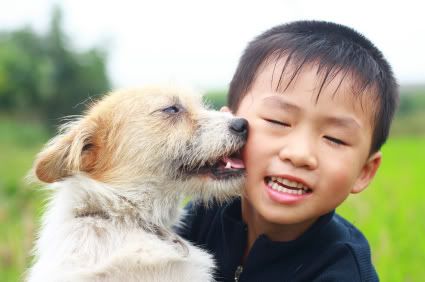
Experts agree that there is no “safe” pet or breed of dog for children to interact with, but there is a great deal that you can do to keep your children safe around pets. Obviously, any exotic or foreign pet needs to be checked out by a veterinarian to ensure they are not carrying diseases that could transfer to a young child. As small children are more likely to be down on the ground and may put things in their mouths, cleaning up after your pet (including vacuuming up all that fur and dander) is also an important aspect of parenting with pets. If you have pets that could be dangerous to your children, eliminate the possibility of interaction- something easiest done with pets that reside in confined habitats.
Choose new pets very carefully. When bringing new pets into a home with small children, make sure these pets are appropriate. There are certain breeds of dogs, for example, that are known for being good with children, but be sure you get all the details! Adult Saint Bernard’s for example are great with small children, but are extremely boisterous puppies, making them less ideal for introduction (as puppies) during a child’s preschool years.
Supervise interaction. No matter how calm or even tempered your cat/dog/rabbit may be, you should still supervise your child’s interaction with them. Teach children how to approach animals and how to touch them. Also show them what to do if an animal gets upset. Explain that animals respond to their tone of voice, not the words they are saying.
Get them involved. Your young children cannot be fully responsible for taking care of a pet, but they can help out. This will help them to learn about the animal and bond with it, and develop a sense of responsibility. Young children can put pre-measured amounts of food and water into an animal’s bowl, help train an animal by learning a few basic commands (knowing how to tell a dog to sit, stay, lie down, and come will also help ensure their safety around the animal), and kids can always accompany you on walks with your pet.







